“Guys, watch my back, please,” Dr. Rodrigo Souza calls out. “I’m breaking the golden rule never to get cornered.”
Souza, 57, can tell the 12-foot bushmaster’s mood just by looking at it.
“The tongue movement tells me everything I need to know,” he says. “They’re gentle animals. They won’t attack if you handle gently.”
Inside a cage at his rescue in the northeast of Brazil, Souza towers over the motionless heat-seeking viper wrapped like a coil on the dirt, his homemade staff pointed at the snake’s neck. With the quickness and precision of a bushmaster attack, his staff makes contact with the viper’s neck, pinning it to the ground. He scoops it up and clamps it under his arm, making sure to keep the neck straight before exiting the cage.
“You cannot restrain the neck area, they will twist around and break their own spinal cord,” Souza says.
With his hands tense in a firm grip, Souza brings the viper’s head to a beaker covered with plastic film. The snake bites down and translucent ooze drips down to the bottom.
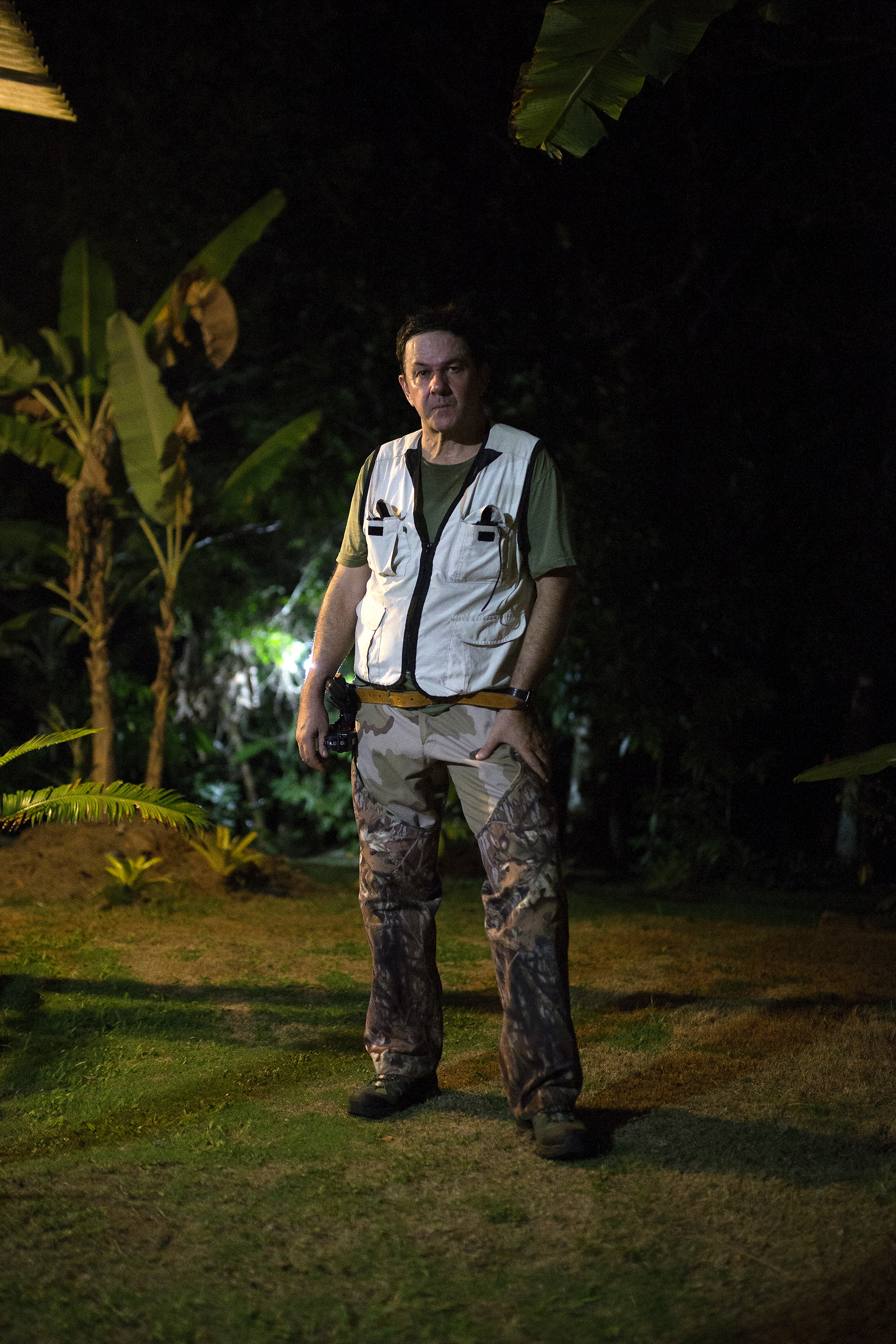
Eladio Sanchez, head of the Ezequiel Dias Foundation research facility in Belo Horizonte, picks up the cup with gloved hands, careful not to let any venom touch his skin. (If venom gets into an open cut or sore it could kill you faster than a bite, Souza says.) Sanchez visits Souza’s rescue to collect venom from bushmasters (known officially as Lachesis muta), the world’s largest pit viper, to produce anti-venom as well as to test it as part of exciting new research into using venom to stop the spread of cancer, or metastasis. It’s a risky venture, but one the doctors think could save lives — human and reptilian.
“Could you imagine if we do come up with something that controls metastatic setting of tumors in humans?” Souza says. “It’s huge. If you have lung cancer you would think it’s huge because it would limit a specific tumor to a specific area and give surgeons time to act instead of trying to find it everywhere in the body.”
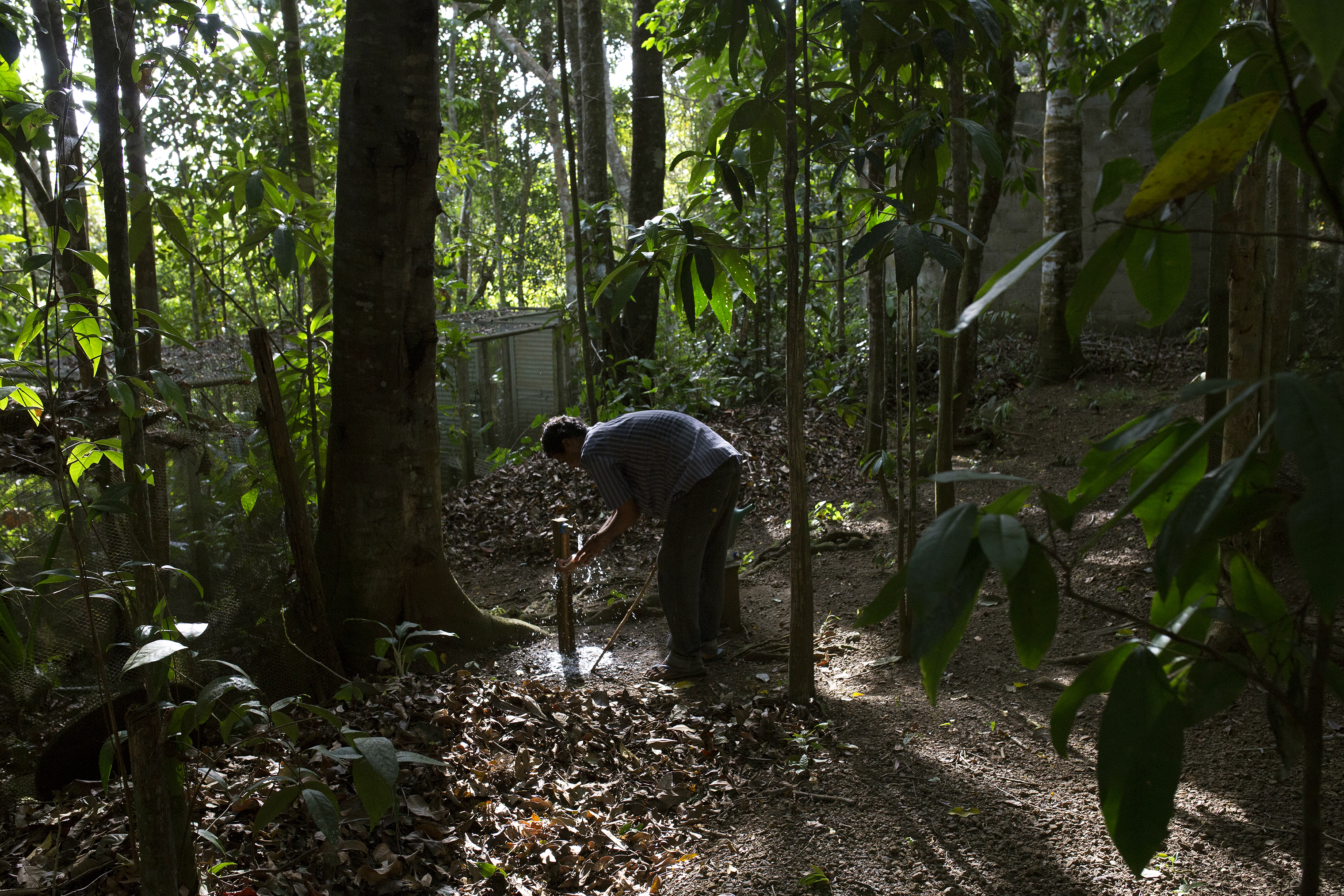
“Snake oil,” is a common way to refer to hoax medicine, but drugs backed by clinical trials derived from snake venom have shown very real success. A June 2018 study lists six groups of venom-derived drugs that have gotten FDA approval in the U.S. since 1981. One of the most successful drugs derived from snake venom is captopril, an angiotensin-converting enzyme (ACE) inhibitor used to treat high blood pressure, heart failure, and kidney problems caused by diabetes. It also reduces the risk of death after a heart attack. The ACE inhibitor class of drugs is used by over 40 million people worldwide and its key ingredient comes from another Brazilian pit viper, the Bothrops jararaca.
To explain how snake venom attacks diseases, it’s important to clear up a common misconception. Snake bites do not kill their prey like a lethal injection; venom is a far more complex assassin. Snake venom is a concoction of hundreds of minerals, peptides, enzymes, and proteins, and is able to attack a victim’s ability to execute bodily functions. In the case of bushmasters, venom released through its retractable fangs can cause fits of vomiting, uncontrollable diarrhea, severe blood pressure drop, loss of eyesight, and the throat to close shut, leading to death within minutes if untreated. However, if engineered properly, researchers have been able to isolate and repurpose certain toxins within venom to attack a specific target, including cancer cells.

“When cancer goes metastatic, that’s when we get big problems arising because it diffuses through the entire body and that’s where the major lethal effects can come from,” says Stephen Mackessy, a professor of biology and researcher at the University of Northern Colorado who, with his team, has been working to identify a number of different compounds in venoms that can stop cancer cells from spreading.
But the research has hit a couple of barriers. For one, it remains controversial. “Many, many, different venoms kill cancer cells very nicely,” Mackessy says. “Unfortunately, the same venoms that kill cancer cells, if you put them with normal cells they’ll kill them very nicely as well.”
Clinical testing for venom-derived drugs only started in 1968 with Arvin, an anticoagulant drug derived from Malayan pit viper venom that has since been replaced, and testing venom in labs for cancer research is even more recent.
“There is no question that venoms contain diverse substances that can influence a broad spectrum of host responses, some of which may be involved in tumor progression. It therefore certainly would be important to decide whether individual venom components, given in an appropriate way, might be able to confer benefit in some tumors,” Dr. Stephen Galli, a professor of pathology and of microbiology at Stanford, wrote to TIME in an email. “But drawing firm conclusions about whether any venom-derived substances have benefit in particular human cancers will require much more research. This research probably would have to be conducted with candidate venom-derived substances over long periods of time (i.e., years) in large numbers of actual patients with tumors.”
While a group of proteins in viper venom called disintegrins have shown promise in several studies, the bushmaster has still barely been researched. That’s because, like other poisonous snakes and vipers, bushmaster populations are dwindling.
Bushmasters once kept to themselves in the mild climates of the forest, but decades of deforestation has left the Atlantic Forest, the bushmaster’s natural habitat, at about 10 percent of its original size, and has increased bushmaster encounters with humans, decimating their population. The species is now listed as vulnerable, a step before endangered, according to the International Union for Conservation of Nature. To make matters worse, it’s difficult to study bushmasters since they tend to die when kept in labs or zoos due to their preference for the specific conditions of their natural habitat.

In certain cases, it’s possible to isolate and clone toxins in a lab so you no longer need fresh venom on-hand. In Australia, for example, medical researcher Normand Pouliot has succeeded in lab-cloning an inhibitor from another Brazilian viper, the Bothrops alternatus, in his quest to stop metastasis in breast cancer. But Pouliot also found that the venom from another snake he’s studying, the Macrovipera lebtina viper commonly found in North Africa and the Middle East, needs to be isolated directly from live snakes. For medical advancements to continue, researchers will need to convince people to leave wild snakes alone, but that’s easier said than done.
In Colorado, Mackessy has been talking to ranchers and says he’s been making headway.
“When we talk about the potential for anti-cancer therapeutic development it really changes people’s perspectives,” he says. “On the one hand, it’s kind of unfortunate that we have to put it into context of our own utility before something has importance, but on the other, it really brings home the point.”
Meanwhile in Brazil, Souza is fighting to conserve the Atlantic bushmaster, but people in his town of Itacaré have been reluctant, calling him names like “sorcerer,” “the devil’s assistant” or simply “a weirdo.” Brazilian media have even compared Souza to “Grizzly Man” – but he hates that comparison. Unlike Timothy Treadwell, the man filmed in the Werner Herzog documentary who was eaten by bears in Alaska, Souza says he never ceases to fear the snake he loves.
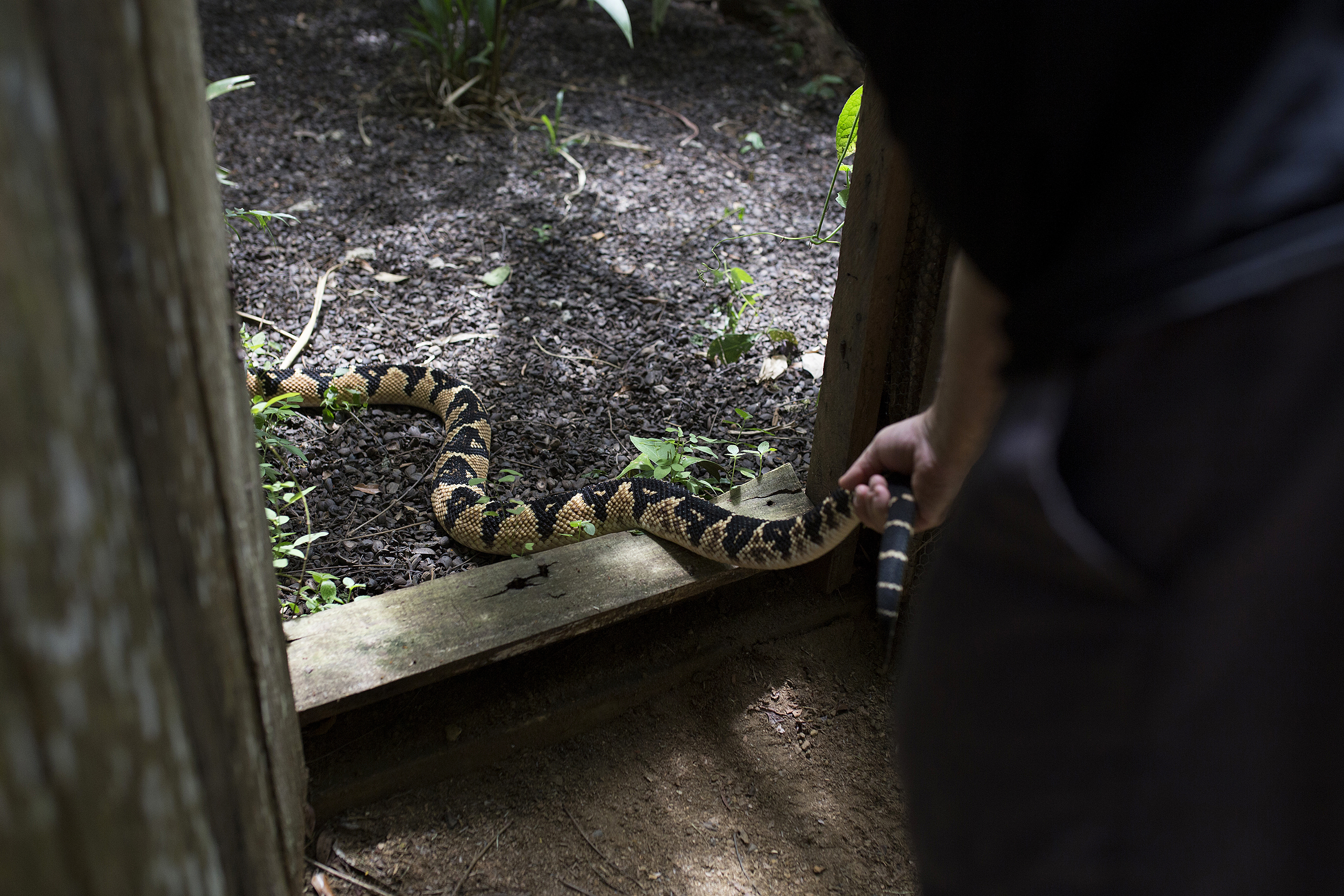
Souza has been obsessed with snakes since he was a boy growing up in Belo Horizonte.
“My first real experience with venom, I was 12 I think,” Souza says.
He and a few friends ran into a green Philodryas efface snake and Souza watched as his friends clubbed the snake until its spine was broken.
“I took the snake to my house to fix the spine. I thought I could do that, and it bit me,” says Souza. “I told my parents it was a soccer accident. My arm was swollen up to the elbow for 10 days. All purple. I didn’t know what I was doing.”
Souza’s passion for snakes continued throughout his adolescence, but when it came time to apply for college, he caved to pressure from his parents to study medicine. After graduation, Souza started working as a doctor at a small hospital in the Brazilian state of Bahia. While there, he fell in love, married and moved to the city of Itacaré with his wife, a dermatologist. They had two kids, Gabriel, now 19, and Luca, 16.
In Itacaré, Souza noticed that locals were hostile towards the bushmaster, known in Brazil as surucucu, meaning “one that strikes repeatedly,” or pico de jaca due to its resemblance to a jackfruit. Souza had heard stories about how a bushmaster would kill you if it had the chance, but he saw it the other way around. While it’s true that a bushmaster bite could kill you in minutes without anti-venom, the snakes feed on mostly rats and mice, and rarely attack humans. Their bites accounted for just 3.72% of all snake attacks in Brazil in 2013.
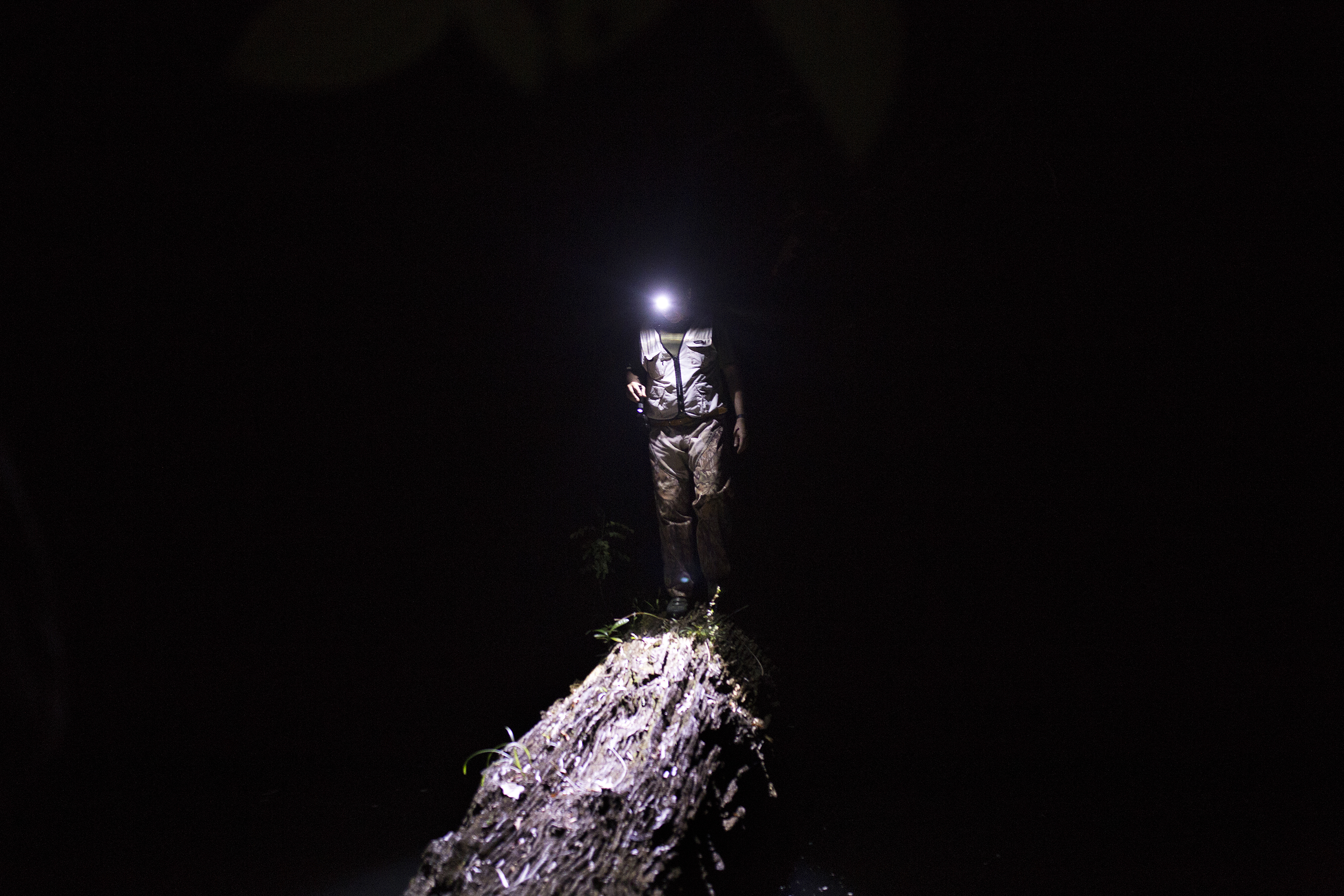
“People don’t care about venomous snakes,” Souza says. “Would you like to have a rattlesnake nearby that will kill your son in two hours or something like that? It’s complicated, but it’s a living being that has the same right as you and I have. I believe that.”
So Souza started encouraging locals and emergency services to give him a call whenever they saw a bushmaster in the street, a ditch, someone’s garden — anywhere they didn’t want it. Souza would approach the snake, snatch it up, and toss it in a bag to take home. Locals couldn’t believe it.
Once, during Carnival, a massive anaconda stretching 20 feet long and weighing over 200 pounds floated on the river on top of logs, sending beer-drinking revelers fleeing in panic. Police went to Souza for help.

Souza carries a gun and practices Krav Maga, the martial art used by the Israeli army, but he knew he couldn’t handle this snake alone. So he called for help from several capoeiraistas, friends who practice the Brazilian martial art. Together, they leapt onto the anaconda’s back, pinning it to the dirt. Souza corralled the anaconda into the back of his truck and brought it home to his bathroom floor.
“That night made me famous,” Souza says, shaking his head.
As Souza started getting more calls, he realized that bringing snakes home was too dangerous for his children. So in 2004, he bought a nearly 10 acre property in Serra Grande, 18 miles south of Itacaré, to house rescued snakes. He built chicken wire cages, fed his snakes live rats, and studied them. Many of Souza’s first bushmaster rescues died due to their sensitive nature, but he managed to keep the majority alive.
“My process was upside down,” he acknowledges. “The last thing is the snakes. I started with the snakes.”
There were other mistakes. In the first years of the rescue, a biologist came to study the bushmasters and was attacked.
“I was holding the head and he was down introducing a piece of steel to determine the sex and he made the wrong move and the animal – bap,” Souza says. Within 10 minutes, the biologist was unconscious. Fortunately, Souza used his medical training to administer 20 vials of anti-venom and artificially raise the biologist’s blood pressure. He survived.

Brazilian regulators soon found out about Souza’s facility and decided to act. Ibama, the country’s environmental agency, warned Souza that keeping deadly animals is against the law and urged him to let go of his bushmasters. A surprise visit from the agency found undeclared snakes under Souza’s care (Souza says he’d saved 12 newborn bushmasters trapped inside a house) and he was slapped with a 15,500 real fine ($4,100). Souza defiantly took the charge to court in 2006 and only recently won the right to keep the snakes.
Then, in 2007, Souza discovered snake eggs on his property. Before this point, Atlantic bushmasters had never been bred in captivity. The Dallas Zoo credited Souza for the feat and he received international acclaim for how he managed to raise bushmasters in a facility that mimics their natural habitat.
But in Brazil, he has been met with more bureaucratic headaches. Denied a license from Brazilian authorities which would allow him to legally breed bushmasters (he says all the births so far have been “accidental”), Souza has been unable to apply for foreign funding for 14 years. He has received a few sporadic donations, and works as many as 90 hours per week at his job as an emergency room surgeon to pay $2,500 in monthly bills.
“Thinking about my first marriage, I’m sure at one point she thought it was too much for the snakes,” Souza says. He and his wife divorced in 2012. “I recall her saying that things are missing here at home and the snakes are OK. As if I was diverting funding from my family to the snakes, if I could turn this into a nice apartment. She’s right, but I didn’t, this is not me.”
Despite Souza’s apparent recklessness (he doesn’t have enough anti-venom left if he gets bitten, although he did survive a bite without anti-venom in 2016), his conservation efforts continue to prove effective. Today, Souza raises 65 healthy bushmasters in a dozen outdoor cages and an indoor facility where snakelets are kept in bins or tents until they’re big enough to move outside. In another sterile white room, nearly 1,000 rats are bathed monthly, de-parasited, and fed a meticulously prepared nutritious concoction of grains and vitamins made from local and organic ingredients. Souza has found that – like his human patients in the hospital – giving the snakes the right diet has been crucial to their wellbeing.

Last year, a woman named Karen Castañeda heard about Souza, the man fighting to save bushmasters in Brazil, and mentioned it to her husband, Felix Urra. Urra is a cancer researcher and the founder of a reptile conservation center at the University of Chile who had spent years looking for a way to obtain rare bushmaster venom, but had never heard of anyone who managed to keep them alive in captivity. “I felt amazed because I did not know him after three years of searching for people like that,” he says of Souza. Urra reached out immediately.
It was a welcome call for Souza. Environmental protection often takes a backseat to issues like corruption, poverty, and violence in Brazil (Jair Bolsonaro, the country’s new President-elect, has pledged to pave a highway through the Amazon.) Brazilian conservationists are also concerned about new legislation that’ll make biodiversity research even more bureaucratic. Thousands of endangered species are being ignored across the country, so why spend time and effort saving an animal that could kill you? many wonder. But maybe, Souza figured, he could get more help if the animal saved lives rather than took them.
Urra told Souza that, due to the success of disintegrins in studies of viper venom, he hopes to find toxins within bushmaster venom that can stop metastatic growth in breast cancer cells.
“We are working to explore if these toxins can inhibit the tumorigenic properties of malignant cells as the resistance to induction of cell death and metastasis, two key events that produce the failure of current chemotherapy,” Urra says. He’s in touch with Sanchez, whose lab plans to isolate potentially useful toxins from the venom, which Urra’s team will then study in a medical setting. “These animals have biomedical, pharmaceutical and ecological importance,” says Urra, “that must be conserved.”
Rob Carmichael, a friend of Souza’s and a curator at Wildlife Discovery Center in Lake Forest, Illinois, says Souza’s work is critical to protecting bushmasters. “But perhaps even more significant from an ethnocentric standpoint is the potential for finding [treatments] for cancer from Souza’s venom research,” he says. “He’s done much with his more primitive set up, but the potential is real if he can get some funding.”
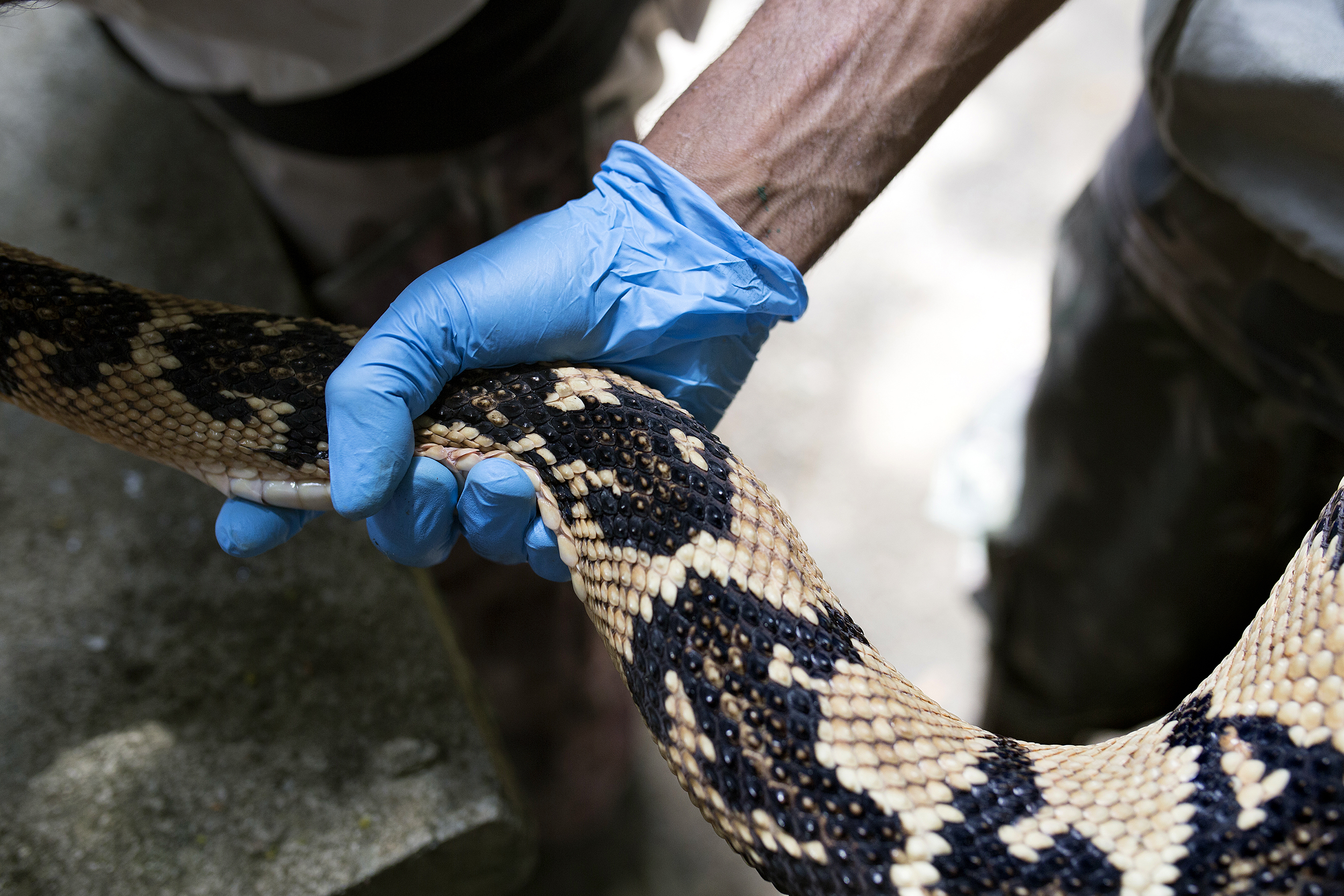
“Let’s go feed the fish,” Souza says.
Carrying a container of fish food and wearing a plain black T-shirt over grey shorts, he walks down the hill to his swimming pool, a natural pond lined with tall bamboo trees. Without hesitation, Souza glides into the murky water up to his neck. He flicks his wrist and a shower of brown pebbles sprinkles on top of the water. For three or four seconds, only the sound of rustling trees and chirping birds are audible – but then the water begins to simmer. Soon, the water bubbles with the gulps of fish as big as 30 pounds that Souza has raised in the pond.
“If you go fishing here you’re going to have a problem with my kids,” he says before dunking his head in the water for a wide breaststroke.
Since growing up with the snakes, Souza’s teenage son Gabriel recently moved to Serra Grande to work on his father’s project – something Gabriel’s mother isn’t keen on.
“She’s right to be afraid of the kids being involved with it,” Souza says. “I myself am, too.”
But passing the rescue and research on to his son or Claudio Barreto, the man who manages the rescue when Souza is away, may come sooner than Souza would like. Recently, he’s noticed his grip getting weaker. He fears a slip-up while handling a squirming bushmaster’s neck could leave his children without a father.
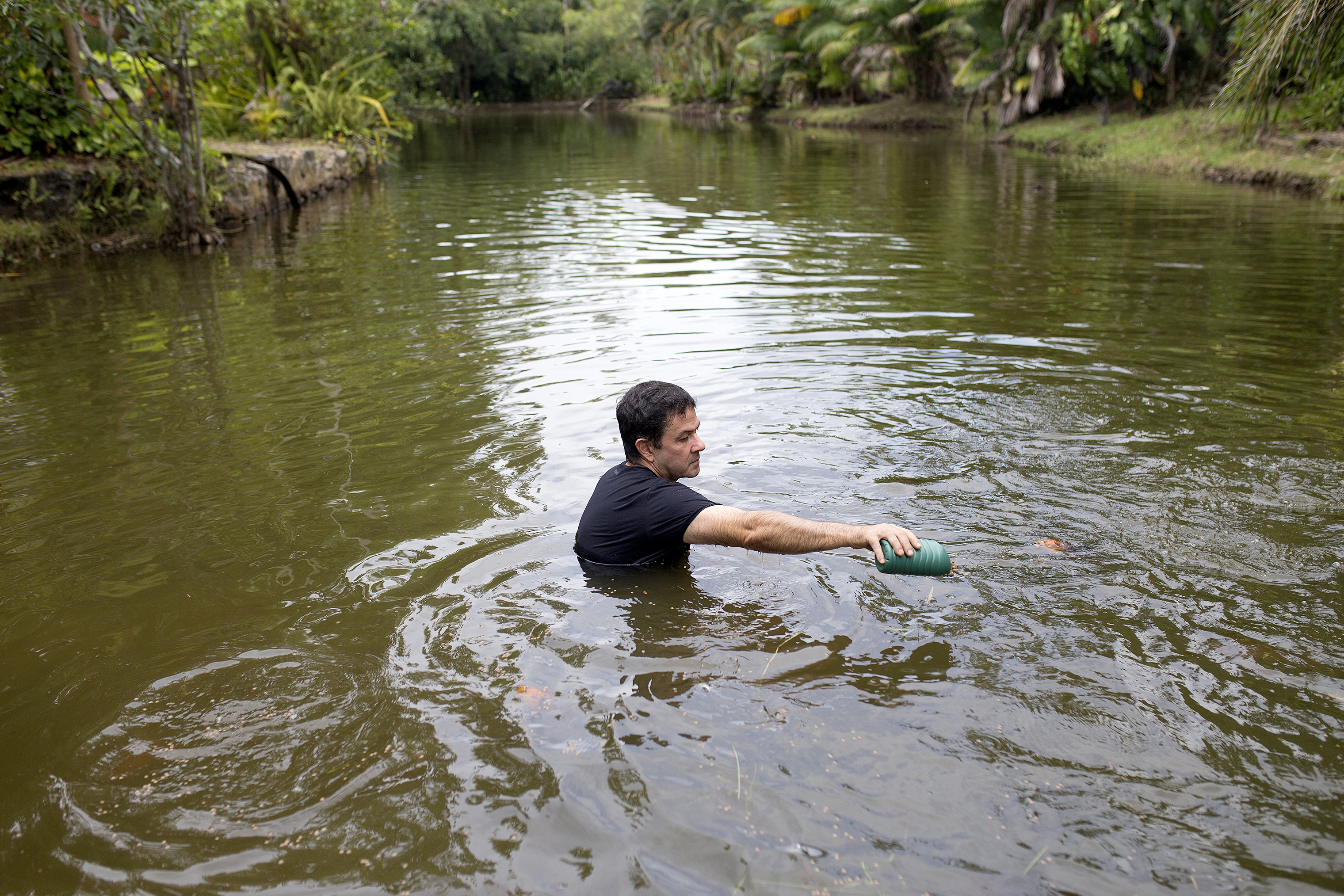
Meanwhile, a tested venom-based solution to cancer metastasis is still a long way away. Research into the cancer-fighting effects of bushmaster venom is set to begin at the University of Chile in 2019, as soon as a selection of toxins are isolated by Sanchez and his team in Belo Horizonte. Urra gives an optimistic estimate of five to 10 years before a potential venom-derived drug could receive FDA approval, but he admits it’s notoriously difficult and expensive to get a drug through the FDA. “Sometimes, it ends up being a headache to take a drug to its approval, but it is a challenge that we would like to carry out,” he says.
This fall, Ibama finally agreed to grant Souza a permit for his rescue, but he’s still waiting on another government agency before he can get an official license. He expects that should come soon, but he’s been expecting that for more than a decade.
“I have $50,000 U.S. dollars of bank loans to pay with interest rates 3- to 4% a month for the next five years, this is the cost of this madness,” Souza says. “And the weirdest thing is that I would probably do it all again.”
- How Donald Trump Won
- The Best Inventions of 2024
- Why Sleep Is the Key to Living Longer
- How to Break 8 Toxic Communication Habits
- Nicola Coughlan Bet on Herself—And Won
- What It’s Like to Have Long COVID As a Kid
- 22 Essential Works of Indigenous Cinema
- Meet TIME's Newest Class of Next Generation Leaders
